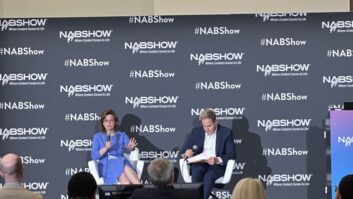Remarks of Jeff Smulyan, chairman/CEO of Emmis Communications, to the U.S. House Energy and Commerce Subcommittee on Communications and Technology on “The Future of Audio,” June 6, 2012.
I am here today because I believe in the future of radio in cell phones and what it can mean to all Americans.
I have spent many years working to get local radio station signals accessible on mobile phones. Radio chips, which are just mini radio receivers installed in a cell phone, are literally the size of a tic-tac, cost pennies, and can give you the ability to listen to your favorite local radio station wherever you may be.
Now let me start by dispelling a myth that has been repeated by my friends in the wireless industry: neither I nor the NAB is pursuing a legislative mandate that radio chips be included in phones. We are NOT asking for a mandate. What I am committed to is pursuing an education campaign to explain the enormous benefits that come from installing radio chips in mobile devices, and activating the ones that are already in phones today.
Radio chips are the definition of consumer-friendly. Today, mobile customers are streaming music through apps they’ve downloaded, but in the process, they are probably racking up hefty charges to their data plans. You see, when you stream music, you’re using the Internet, and the wireless carriers charge you for that access. And, as you know, unlimited data plans are ending for most carriers. A radio chip, on the other hand, picks up the free, over-the-air broadcast signal – the chip turns your device into a hand-held radio. So a radio chip provides mobile phone consumers with a way to listen to music and information for FREE without meeting and exceeding their data caps. Giving mobile phone users cost-free options is the definition of consumer-friendly and something we hope the cellular industry can embrace.
Something in which this Committee should be particularly interested in are the spectrum efficiencies that can be gained from integrating radio chips into mobile devices. Pandora alone said its listeners streamed over 3 billion hours of music in the last quarter. That doesn’t even include the additional hours for popular sites like “I Heart Radio” or TuneIn on my own stations. Music streaming, which uses the Internet, is part of the reason we have a very congested broadband system. A radio chip utilizing the free over-the-air radio signal can off-load traffic from congested broadband networks, helping relieve what we know are significant and growing spectrum demands. And now FM chips use less than 20 percent of the battery life that streaming requires.
Finally, and most importantly, there are tremendous public safety reasons for putting radio chips in cell phones. As we have seen during times of crisis, radio broadcasters stay on the air with the use of generators, when mobile phone users are often left with devices that are unable to make calls or send emails due to an overwhelmed cellular system. Even more important, when the power grid goes down, the cell system is off. Since most broadcasters have emergency generators, we are able to provide life-saving information at the times of greatest peril.
I appreciate that CTIA has embraced the Commercial Mobile Alert System, but the system limits emergency warnings to a 90-character text that lacks the kind of detail desperately needed by citizens during an emergency. In a life and death situation, the importance of redundancy of information cannot be overstated. If you think a 90 character text message is sufficient, if it gets through at all, ask the people in Joplin, Missouri, or the people in New Orleans, or the people in Owensboro, Kentucky, or the people in Fargo, or the people who have endured any major crisis in this country.
The real irony here is that if educated about radio chips, consumers want them. According to a recent Harris Interactive poll, 81 percent of those polled who own a mobile phone would consider paying a small, one-time fee to access their local radio stations. Additionally, 76 percent of adults and 86 percent of 18-34 year olds say they would use a radio built into their mobile phones.
Curiously, many cell phones in the U.S. already have the radio chip embedded in the phone, these chips just haven’t been activated. In fact, I’m holding here two Samsung Galaxy Notes. This one is from the U.K. and this one is from the U.S. They look identical. But the U.K. version has an activated radio chip – you can listen to any FM radio station with no problem. The U.S. version actually has the radio chip, but the chip has been deactivated.
We agree with CTIA, we should let the market decide. Just as it has in the rest of the world where over one billion phones with radio have been sold. But, that market has been closed in this country.
The good news is that the consumer experience is only getting better. The brand new, state of the art HD radio chip was recently unveiled. This low-powered, low-cost, high processing chip uses an app which allows a user to tune into their local stations. The HD chip offers song tagging features and delivers an interactive radio experience, offering benefits to wireless carriers, radio stations, their advertisers and consumers. It’s a true win-win.
For all of the reasons I’ve discussed, I believe the time is now for a reasonable and factual discussion on the merits of radio-enabled mobile phones.







